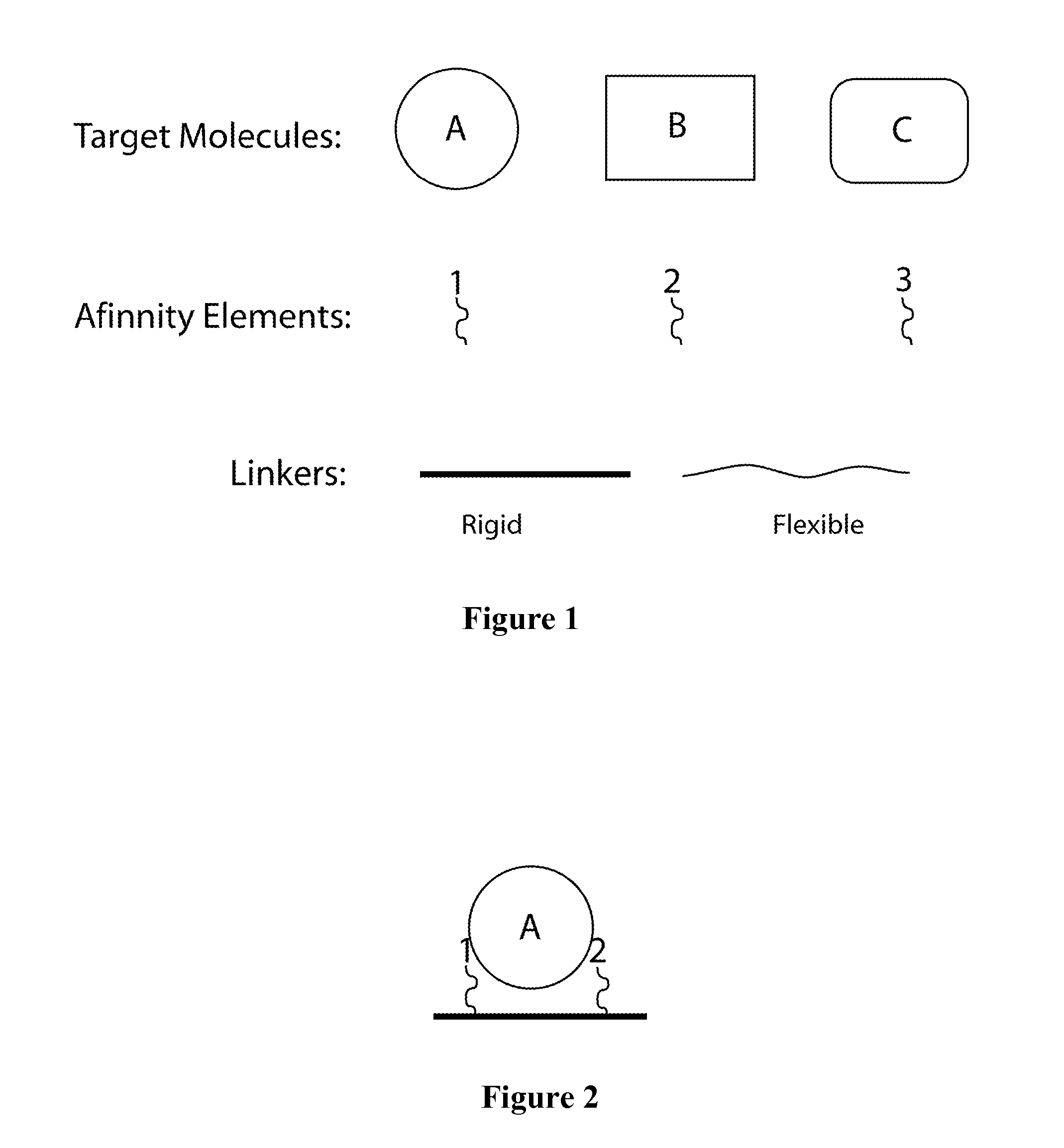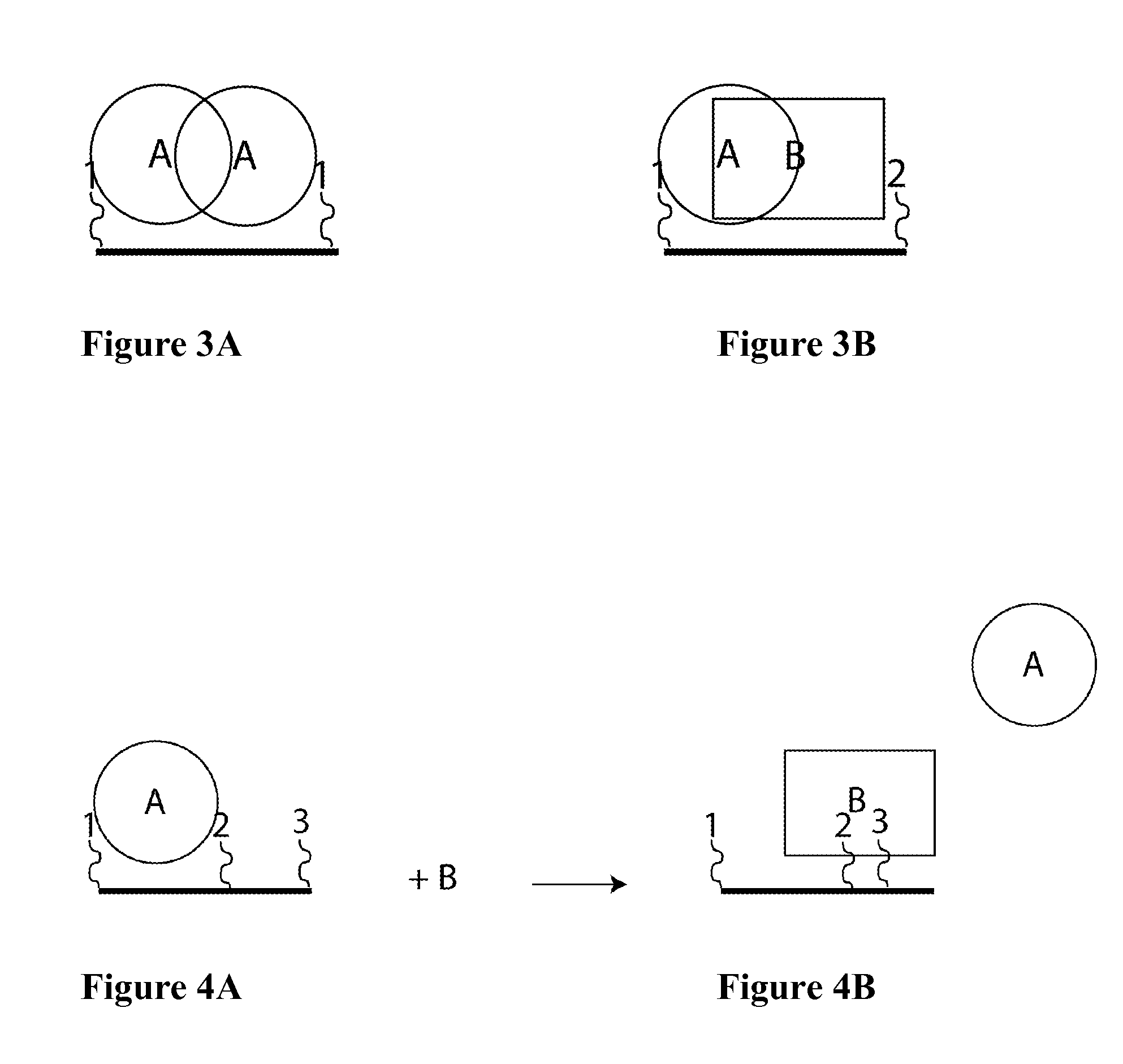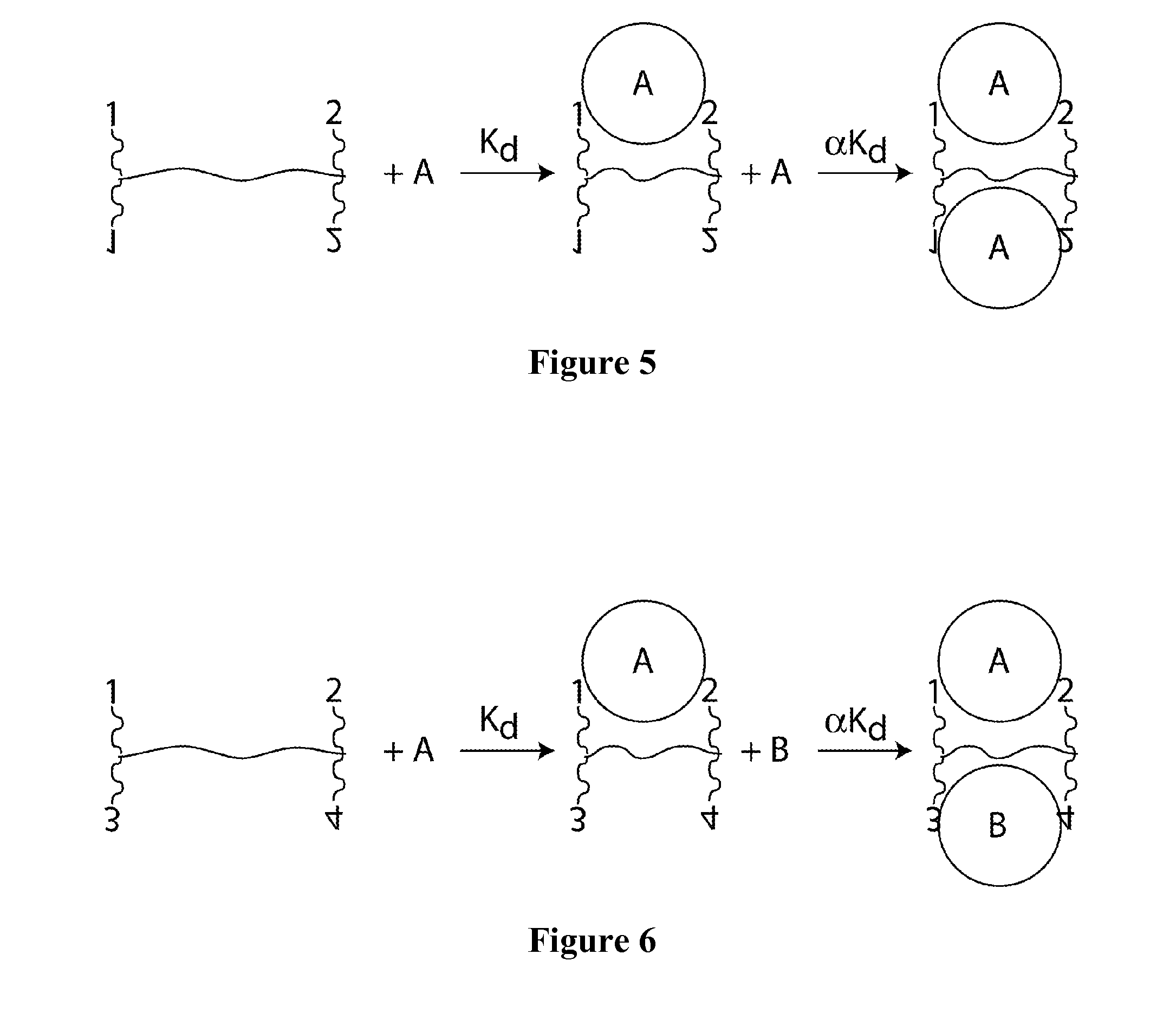Synthetic antibodies
a technology of synthetic antibodies and antibodies, applied in the field of synthetic antibodies, can solve the problems of high cost, erratic process, and high animal handling costs, and achieve the effect of reducing the cost of animal processing and recurrent selection processes
- Summary
- Abstract
- Description
- Claims
- Application Information
AI Technical Summary
Benefits of technology
Problems solved by technology
Method used
Image
Examples
example 1
[0302]In one non-limiting embodiment of this second aspect of the invention, an array of 4,000 polypeptides is spotted on a slide. Each polypeptide is 20 amino acids in length, and is spotted such that its orientation is controlled to be through the C-terminus. A large amount of sequence and chemical space can be adequately sampled using only a small fraction of the possible space. For example, in the case of this array, there are 1917=5×1021 possible polypeptide sequences (the first 3 amino acids are held constant, but this is not necessary and cysteine is used only at the C-terminus as attachment via a thiol), but we sampled just 4×103 sequences and can identify polypeptides that show moderate binding affinity and specificity to a number of proteins.
[0303]The target protein is labeled with a florescent dye and incubated with the array. Polypeptides that bind the target protein are determined. Alternatively, we have incubated unlabelled affinity tagged form of the target protein an...
example 2
Microarray Selection of Affinity Elements for Synbody
[0309]This example demonstrates the identification of affinity elements by screening a target on an array of random polypeptides. A microarray was prepared by robotically spotting about 4,000 distinct polypeptide compositions, two replicate array features per polypeptide composition, on a glass slide having a poly-lysine surface coating. Each polypeptide was 20 residues in length, with glycine-serine-cysteine as the three C-terminal residues and the remaining residues determined by a pseudorandom computational process in which each of the 20 naturally occurring amino acids except cysteine had an equal probability of being chosen at each position. Cysteine was not used except at the C-terminal position, to facilitate correct conjugation to the surface. Polypeptides were conjugated to the polylysine surface coating by thiol attachment of a C-terminal cysteine of the polypeptide to a maleimide (sulfo-SMCC, sulfosuccinimidyl 4[N-malei...
example 3
Microarray Selection of Affinity Elements for DNA Linked Synbody
[0311]This example demonstrates another embodiment of a process for identifying affinity elements for incorporation into a synbody. 15-mer polypeptide affinity elements for a DNA linked synbody specific for Gal80 were identified by obtaining and analyzing data from several polypeptide microarray experiments performed using standard 4,000 feature polypeptide microarrays each of whose features comprised a polypeptide 15 residues in length, terminating in glycine-serine-cysteine at the C-terminus, with the other 12 residues selected from 8 of the 20 naturally occurring amino acids according to a pseudorandom algorithm. Four fluorophore-labeled protein targets—gal80, gal80 complexed with gal4 binding polypeptide, transferrin, and α-antitrypsin—were supplied to LC Sciences for array analysis according to LC Sciences' proprietary protocol, and binding (fluorescence intensity) data were obtained. For screening against the rand...
PUM
| Property | Measurement | Unit |
|---|---|---|
| Fraction | aaaaa | aaaaa |
| Angle | aaaaa | aaaaa |
| Fraction | aaaaa | aaaaa |
Abstract
Description
Claims
Application Information
 Login to View More
Login to View More - R&D
- Intellectual Property
- Life Sciences
- Materials
- Tech Scout
- Unparalleled Data Quality
- Higher Quality Content
- 60% Fewer Hallucinations
Browse by: Latest US Patents, China's latest patents, Technical Efficacy Thesaurus, Application Domain, Technology Topic, Popular Technical Reports.
© 2025 PatSnap. All rights reserved.Legal|Privacy policy|Modern Slavery Act Transparency Statement|Sitemap|About US| Contact US: help@patsnap.com



